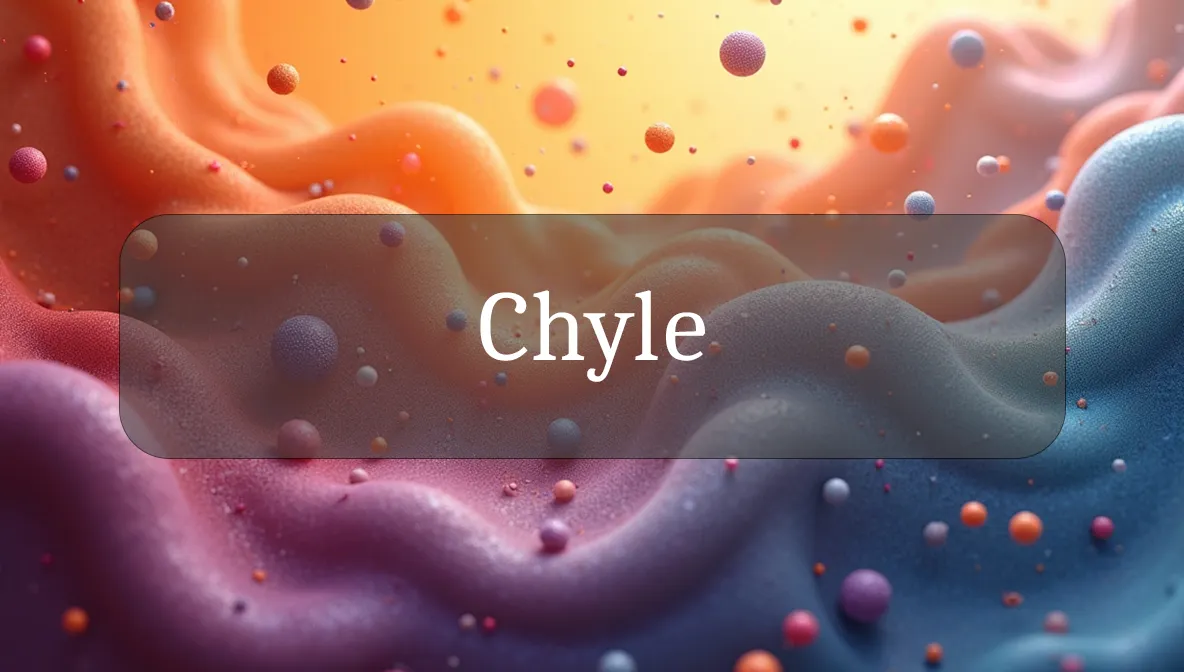The Milky Fluid That Fuels Your Body
Chyle might not be a term you hear every day, but this unique body fluid plays a fascinating role in keeping you nourished and energized. Think of it as a nutrient-packed highway that delivers essential fats from your meals to your bloodstream. Let’s explore what chyle is, why it matters for your wellness, and how to keep it flowing smoothly.
Identity and Function
Chyle is a milky, nutrient-rich fluid that forms in your small intestine during digestion. It’s a mix of lymph (a clear fluid that circulates in your lymphatic system) and emulsified fats absorbed from the food you eat. After you enjoy a fatty meal, chyle carries these fats, along with fat-soluble vitamins (like A, D, E, and K), through your lymphatic vessels to your bloodstream, where they’re used for energy, cell repair, and overall health.
Health Benefits and Physiological Role
Chyle is like a delivery service for your body’s energy and building blocks. Here’s why it’s so important:
- Fat and Nutrient Transport: Chyle carries dietary fats and fat-soluble vitamins to your cells, supporting energy production, hormone creation, and healthy skin, eyes, and bones.
- Immune Support: Since chyle travels through the lymphatic system, it works alongside lymph to help immune cells patrol your body and fight infections.
- Energy Storage: The fats in chyle can be stored in your body for later use, ensuring you have a steady energy supply between meals. By keeping your body fueled and your immune system supported, chyle quietly powers your daily vitality.
Production and Sources
Chyle is produced naturally in your small intestine when you digest fatty foods:
- How It’s Made: After you eat foods like avocados, nuts, olive oil, or salmon, your small intestine breaks down fats into tiny particles. These mix with lymph in tiny vessels called lacteals, forming chyle.
- Key Players: Your lymphatic system, especially the lacteals in your gut, and the thoracic duct (a major lymphatic vessel), move chyle into your bloodstream.
- Dietary Influence: Eating healthy fats, like those from fish, nuts, or olive oil, promotes chyle production, while low-fat diets may reduce it.
Signs of Imbalance
Problems with chyle production or flow are rare but can signal issues:
- Chyle Leakage (Chylothorax): If lymphatic vessels are damaged (from surgery, injury, or certain diseases), chyle can leak into areas like the chest, causing breathing difficulties or swelling.
- Lymphatic Blockage: Conditions like lymphoma or infections can block lymphatic vessels, leading to swelling (lymphedema) or poor fat absorption.
- Malabsorption Symptoms: If your body isn’t absorbing fats properly, you might notice greasy stools, weight loss, or deficiencies in fat-soluble vitamins (e.g., weak bones from low vitamin D). If you experience unusual swelling, breathing issues, or digestive problems, see a doctor to check for lymphatic or digestive concerns.
Supporting Healthy Function
You can keep your chyle and lymphatic system in top shape with simple habits:
- Eat Healthy Fats: Include moderate amounts of nutrient-rich fats from foods like avocados, nuts, seeds, and fatty fish to support chyle production.
- Stay Hydrated: Drinking water helps keep lymph (and thus chyle) flowing smoothly through your lymphatic system.
- Move Your Body: Gentle exercise, like walking, yoga, or stretching, stimulates lymphatic flow, helping chyle move efficiently.
- Support Gut Health: A healthy gut aids fat absorption. Eat fiber-rich foods (fruits, veggies, whole grains) and consider probiotics to maintain a balanced digestive system.
- Avoid Processed Foods: Too many processed, low-nutrient foods can stress your digestive and lymphatic systems, potentially impacting chyle production.
Safety and Precautions
Chyle itself is a natural body fluid, so there are no direct safety concerns, but issues with the lymphatic system can arise:
- Medical Conditions: If you have lymphatic disorders, cancer, or gut issues (like Crohn’s disease), consult a doctor to manage chyle-related problems.
- Post-Surgery Care: After surgeries involving the chest or abdomen, watch for signs of chyle leakage (swelling, breathing issues) and report them to your healthcare provider.
- Balanced Diet: Avoid extreme low-fat diets, as they may limit chyle production and reduce fat-soluble vitamin absorption, impacting overall health.
Fun Fact
Chyle’s milky appearance comes from its high fat content, which scatters light—kind of like how milk looks white! In ancient times, people noticed this “milky fluid” in the body during dissections, which is why the lymphatic vessels that carry chyle are called “lacteals” (from the Latin word for milk).
Citations
- National Institutes of Health (NIH): Lymphatic System Overview.
- Cleveland Clinic: Chylothorax and Lymphatic Disorders.
- Mayo Clinic: Lymphatic System and Fat Absorption.
- World Health Organization (WHO): Nutrition and Fat-Soluble Vitamins.
- Harvard Medical School: Understanding the Lymphatic System.

